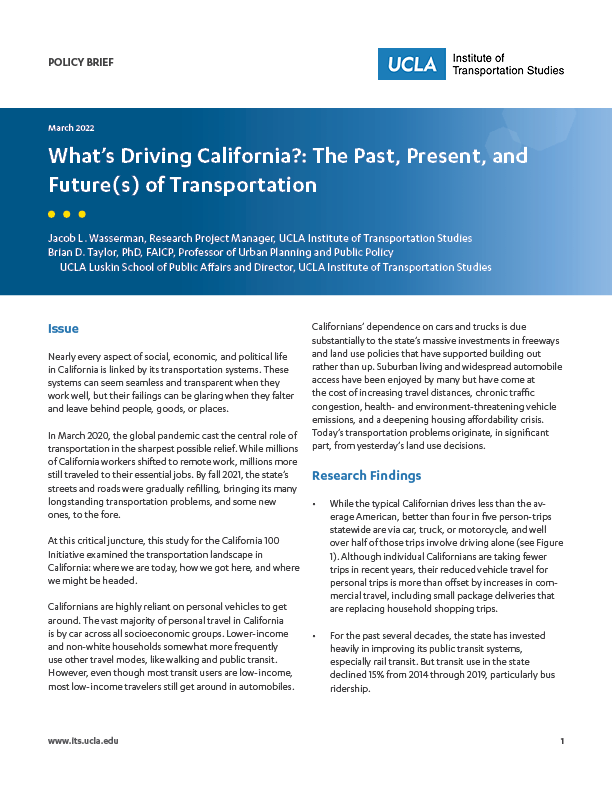Date: March 29, 2022
Author(s): Jacob L. Wasserman, Brian D. Taylor
Abstract
Nearly every aspect of social, economic, and political life in California is linked by its transportation systems. These systems can seem seamless and transparent when they work well, but their failings can be glaring when they falter and leave behind people, goods, or places. This study for the California 100 Initiative examined the transportation landscape in California: where we are today, how we got here, and where we might be headed.
About the Project
This project for the California 100 initiative examines transportation in California: where we are today, how we got here, and where we might be headed. We begin with facts on travel and transportation systems in California today. We next explore the decades of public and private land development and transportation systems that have shaped the current state of play: today’s transportation problems stem, in significant part, from yesterday’s land use decisions. We then consider factors that have either recently come to the fore or are likely to emerge in the near future. We review possible context-specific reforms to reshape transportation in the state, in order to better manage vehicle travel and reduce chronic congestion, shift patterns of development to make them less car-dependent, and increase access for all. Finally, we summarize the findings from a diverse panel of transportation experts convened to explore the possibilities, pitfalls, and implications of four possible future transportation and land use scenarios for California.


